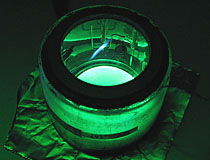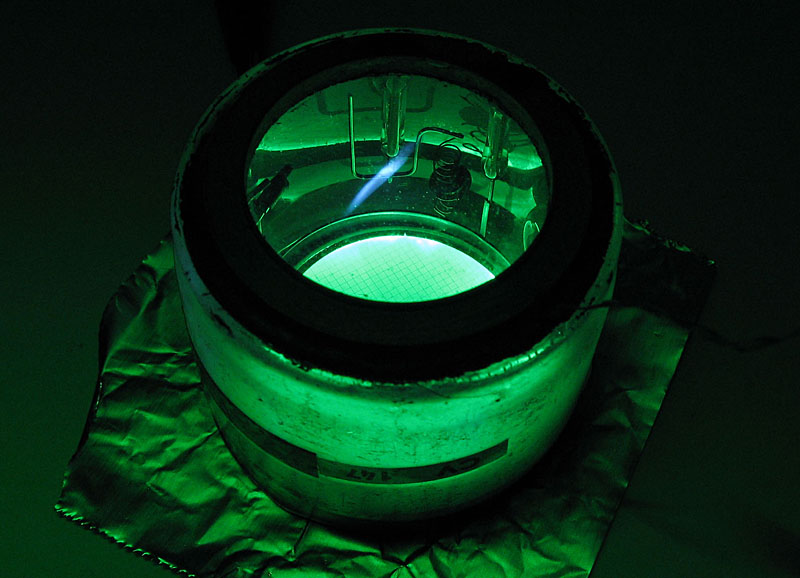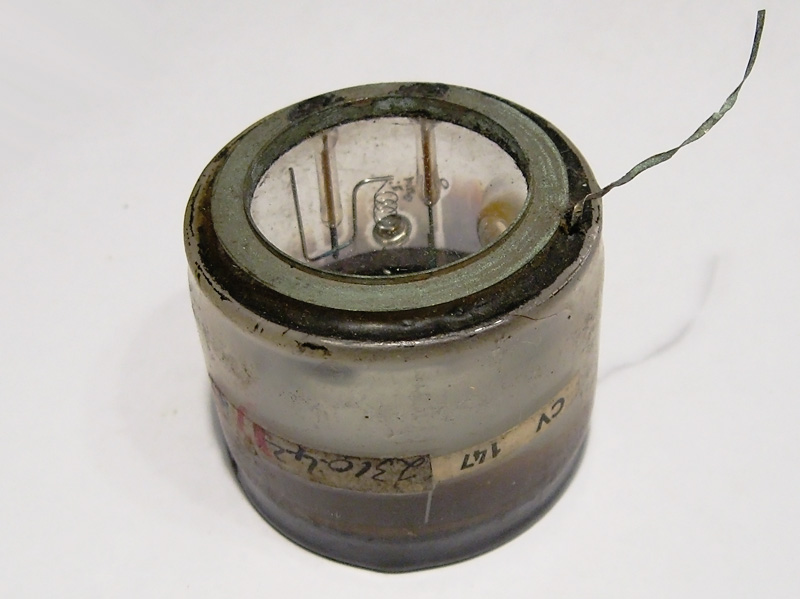| EMI Tabby CV147 & CV148 Image Converter Tubes | |
| Written by AnubisTTP on 2021-02-19 |
|
  |
The CV147 and CV148 are part of a series of tubes produced by EMI for use in World War II era night vision systems. Each tube contains a phosphor coated screen that is sensitive to IR light, which is mounted in a tubular envelope with flat glass faces. These tubes require approximately 3000 volts to function; WWII era night vision scopes used a non-replaceable Zamboni pile to generate the high voltage needed. The high tension would be applied to the metal rings on each side of the tube, with the flat windows on each end of the tube sandwiched between a stack of conventional optics to produce a complete image. After the war many of these image converter tubes were sold off as surplus to the electronic hobbyist community, which is likely how the two tubes shown here entered the private sector.
The CV147 and CV148 are part of a larger family of tubes produced by EMI, ranging from part numbers CV142 to CV149, which were all produced on the same production line. After manufacture each tube would be tested and binned for maximum voltage, at which point a corresponding part number would be assigned.

EMI Tabby CV147 image converter tube, normal operation.

EMI Tabby CV148 image converter tube, at rest.

The CV147 & CV148 were used in World War 2 era night vision scopes.
 Return to Cathode Ray Tubes
Return to Cathode Ray Tubes







 Return to Cathode Ray Tubes
Return to Cathode Ray Tubes